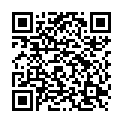|
|
|
| Module code: E936. |
|
|
2V (2 hours per week) |
|
3 |
| Semester: 9 |
| Mandatory course: no |
Language of instruction:
German |
Assessment:
Project work
[updated 13.03.2010]
|
E936. (P213-0170) Biomedical Engineering, Master, ASPO 01.04.2011
, semester 9, optional course
E936 Electrical Engineering, Master, ASPO 01.10.2005
, semester 9, optional course
|
30 class hours (= 22.5 clock hours) over a 15-week period.
The total student study time is 90 hours (equivalent to 3 ECTS credits).
There are therefore 67.5 hours available for class preparation and follow-up work and exam preparation.
|
Recommended prerequisites (modules):
None.
|
Recommended as prerequisite for:
|
Module coordinator:
Prof. Dr. Wolfgang Langguth |
Lecturer: Prof. Dr. Wolfgang Langguth
[updated 09.01.2010]
|
Learning outcomes:
After successfully completing this course, students will have acquired a basic theoretical and practical understanding of EMC. They will have been taught the fundamental physical and engineering models of electromagnetic interference (EMI) and the measures implemented to avoid EMI both in the design phase and in the finished device. Students will learn about the EMI simulations used in assessing electrical equipment and will have acquired some initial practical experience in measuring EMC. They will also be acquainted with current European and international legislation and standards relating to EMC and associated areas and can apply this knowledge when designing and developing products. During the project work, students will have an opportunity to acquire and apply specialist knowledge in their chosen specialist area. As a result, students will be in a position to acquire a more detailed understanding of their specialist area and to use this knowledge in their subsequent careers.
[updated 13.03.2010]
|
Module content:
1.Introduction to EMC
2.Description of EMC
3.Signal spectra
4.The EMC environment: sources and sinks
5.EMC coupling
6.General EMC countermeasures
7.EMC in equipment development and in installation work
8.European law, EU directives, product liability and warranty
9.Overview of EMC measuring techniques
10.Biological effects of electromagnetic fields
[updated 13.03.2010]
|
Teaching methods/Media:
Blackboard, overhead projector, video projector, lecture notes
[updated 13.03.2010]
|
Recommended or required reading:
. Schwab: Elektromagnetische Verträglichkeit, Springer Verlag
E. Habiger: Elektromagnetische Verträglichkeit, Hüthig Verlag
E. Habiger u.a.: Elektromagnetische Verträglichkeit, Verlag Technik, Berlin, München
T. Williams: EMC für Product Designers, B.H. Newnes
R. Perez: Handbook of Electromagnetic Compatibility, Academic Press
H. Meyer, Hrsg.: Elektromagnetische Verträglichkeit von Automatisierungssystemen, VDE-Verlag
W. Rudolph: EMV-Fibel für Elektroinstallateure und Planer, VDE-Verlag
W. Rudolph, O. Winter: EMV nach VDE 0100, VDE-Verlag
M. Grapentin: EMV in der Gebäudeinstallation, Verlag Technik
J. Goedbloed: Elektromagnetische Verträglichkeit, Pflaum Verlag
G. Durcansky: EMV-gerechtes Gerätedesign, Franzisí Verlag
P. Kodali: Engineering Electromagnetic Compatibility, IEEE Press
C. Paul: Introduction to Electromagnetic Compatibility, Wiley & Sons
P. Chatterton, M. Houlden: EMC, Electromagnetic Theory for Practical Design, Wiley
[updated 13.03.2010]
|


